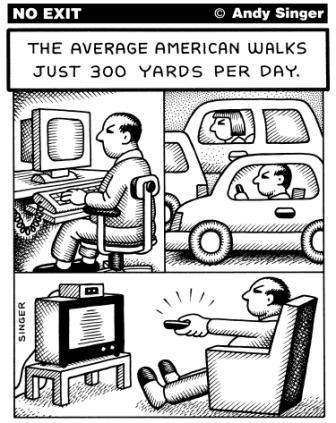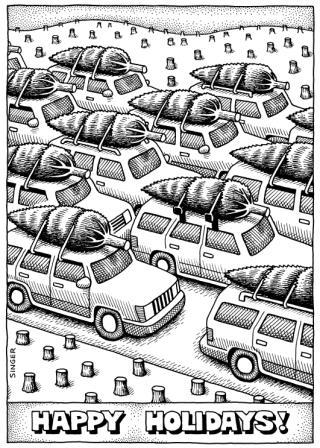On Wednesday, Streetsblog linked to this article by Richard Jackson, author of Urban Sprawl and Public Health. Some excerpts:
The message of the book is simple: our car-dependent suburban environment is killing us. Planners, most notably the New Urbanists, have been saying this for decades, but Jackson’s got the statistics. And the charts. And the tables. In his book and in lectures nationwide, Jackson demonstrates–technically, like a doctor–how sprawl is at least partially responsible for a full range of American diseases, from asthma to diabetes, from hypertension to depression. The reason that we spend one dollar out of six on health care is very preventable, and yet we claim some of the worst health statistics in the developed world.
You say, “The modern America of obesity, inactivity, depression, and loss of community has not ‘happened’ to us. We legislated, subsidized, and planned it this way.” When did you first start to make the connection between the design of our national landscape and the health of our citizens?
In July 1999 the head of the CDC invited his dozen directors to the central office to work on a paper about the ten leading diseases of the twenty-first century. I’m driving over there, and as always I’m thinking about pesticides, herbicides, cancer, and birth-defect clusters–you name it. I’m late, stuck in traffic on Buford Highway, voted one of the ten worst streets in North America. It’s a seven-lane road surrounded by garden apartments, mainly for poor immigrants, with no sidewalks and two miles between traffic lights. It’s 95 degrees out, 95 percent humidity. I see a woman on the right shoulder, struggling along, and she reminds me of my mother. She’s in her seventies, with reddish hair and bent over with osteoporosis. She has a shopping bag in each hand and is really struggling.
I lived in Houston, Texas for eight years. I loved many things about the H, but its build environment was not one of them. Consistently one of the fattest cities in the country, it is also (not coincidentally) one of the most sprawling and car-centric. (Of course, the amazing food might also be a contributing factor. What I wouldn’t give for a taste of boudin right about now. But I digress.) Sidewalks are rare, roads are wide, and strip malls abound. It’s hard to get anywhere in Houston (grocery store, drug store, library, park, cafe–shoot, even the bus stop) walking, and those brave enough to attempt it are often forced into ditches at the side of the road.
On the other hand, it’s 85 degrees there today.


